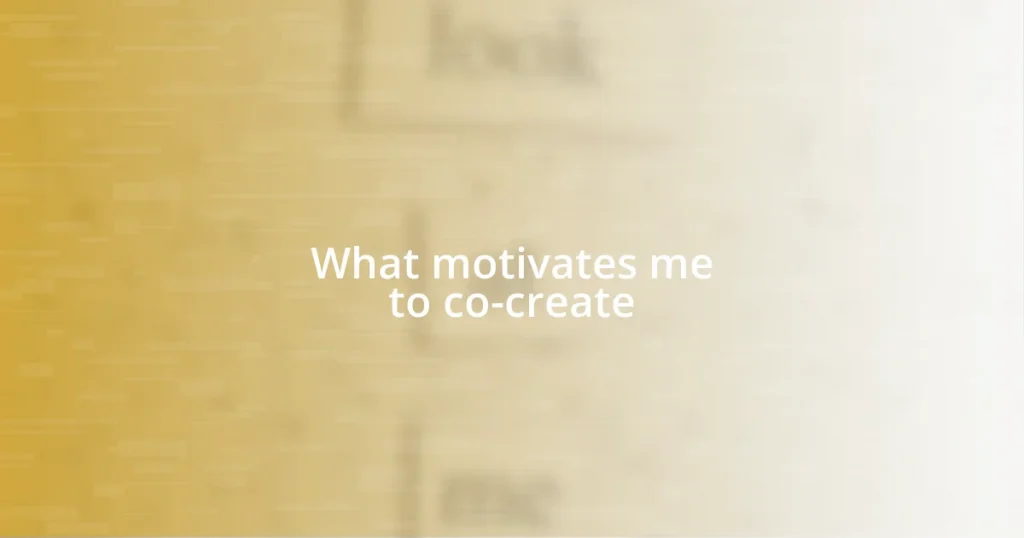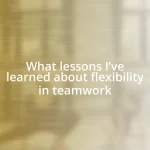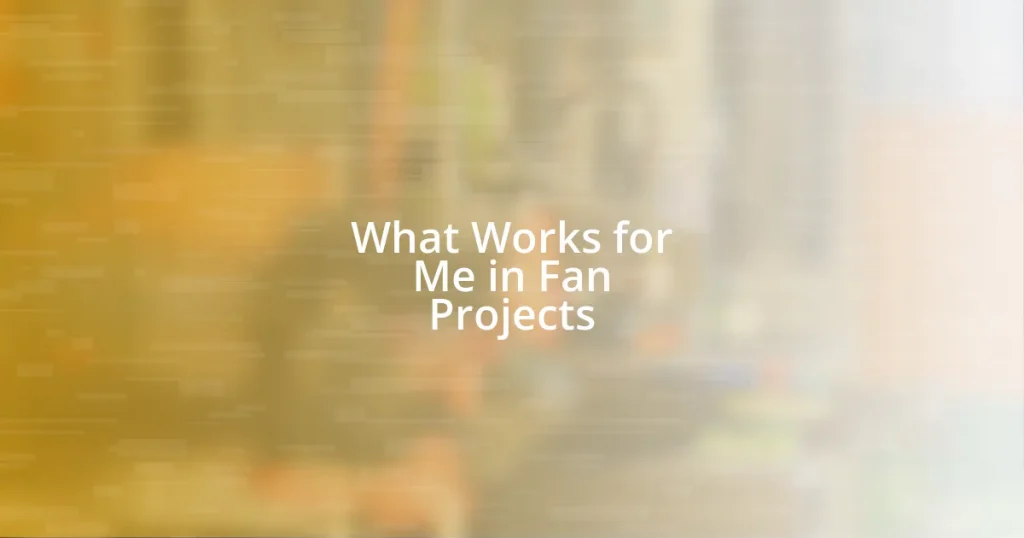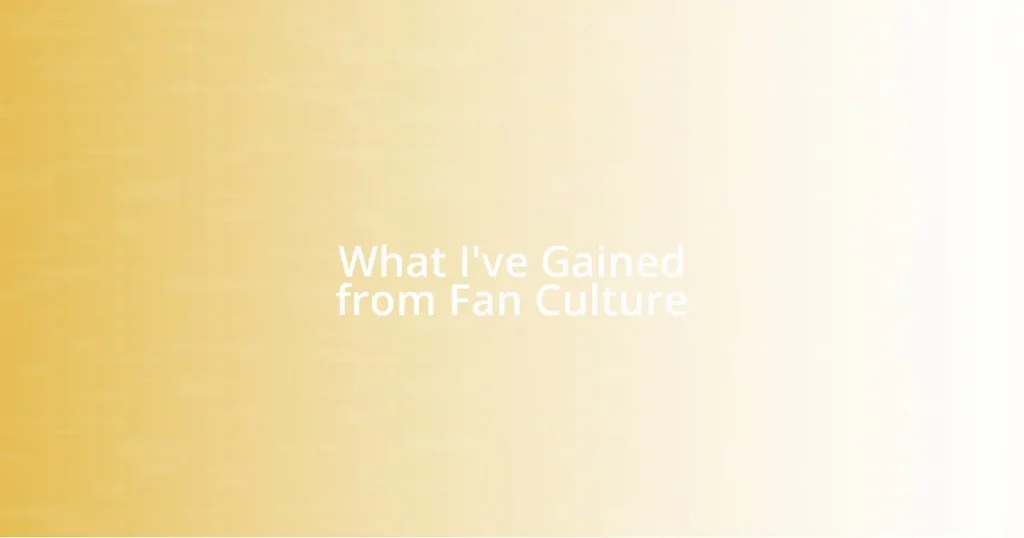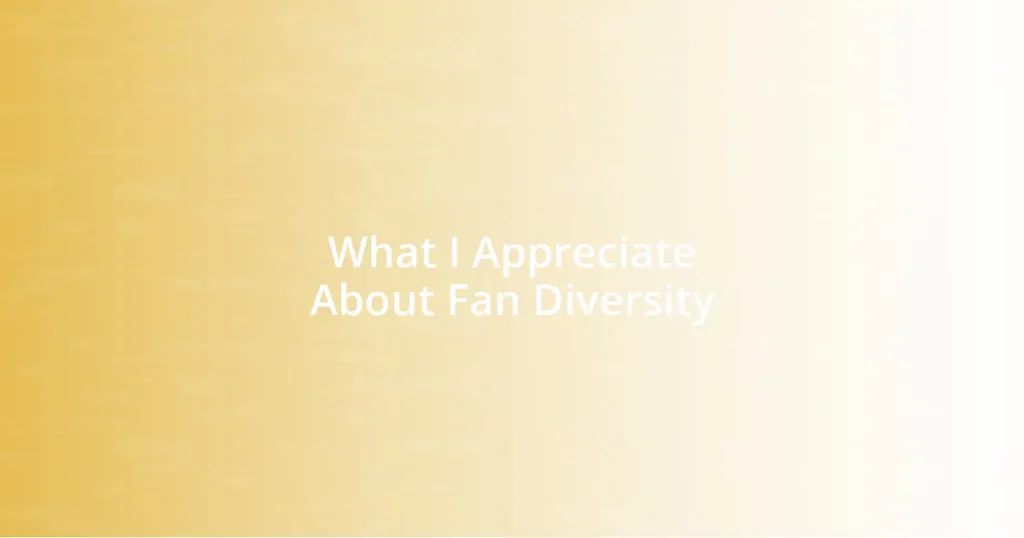Key takeaways:
- Co-creation fosters innovative solutions, ownership, and emotional rewards through diverse perspectives and collaborative efforts.
- Effective collaboration relies on open communication, mutual respect, and shared goals, enhancing accountability and engagement among team members.
- Measuring co-creation success involves both quantitative feedback and the qualitative impact of shared experiences, reinforcing the importance of collective achievements.
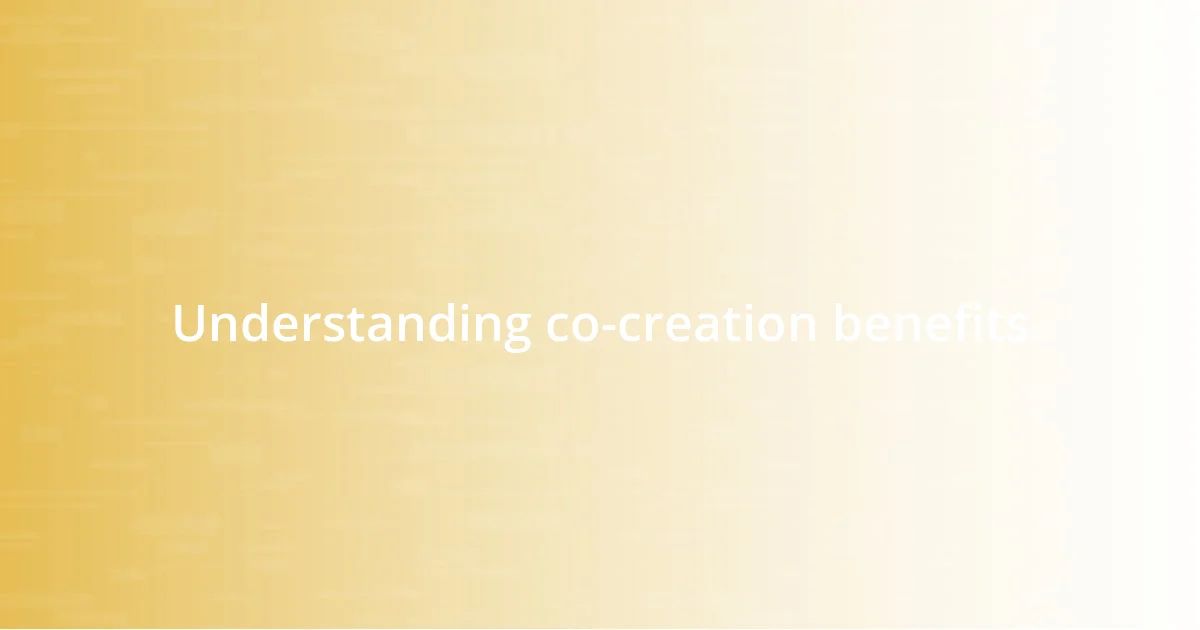
Understanding co-creation benefits
Co-creation is a powerful process that invites diverse perspectives, often leading to innovative solutions that wouldn’t emerge in isolation. I remember collaborating with a group of artists and tech enthusiasts on a project to create an interactive installation. Each person’s unique background contributed fresh ideas that not only enhanced the project but also made the experience feel genuinely collective. Isn’t it exhilarating to see how different viewpoints mesh into something magical?
One of the most rewarding aspects of co-creation is the sense of ownership it fosters. When I worked with a community to develop a local initiative, the participants took pride not just in the outcome but in the process itself. This deep-seated connection transforms mere collaborators into passionate advocates. Have you ever noticed how people rally around projects they’ve helped shape? It’s a sentiment that builds community and strengthens relationships.
Moreover, co-creation often leads to unexpected emotional rewards. During a branding workshop, I witnessed how participants felt a surge of excitement as they collaboratively developed a name and logo that resonated with their values. The whole room buzzed with energy and joy—a testament to how shared creative acts can build bonds and foster understanding. What moments of joy and connection have you experienced while co-creating with others? These benefits not only enhance outcomes but also enrich our human experience.
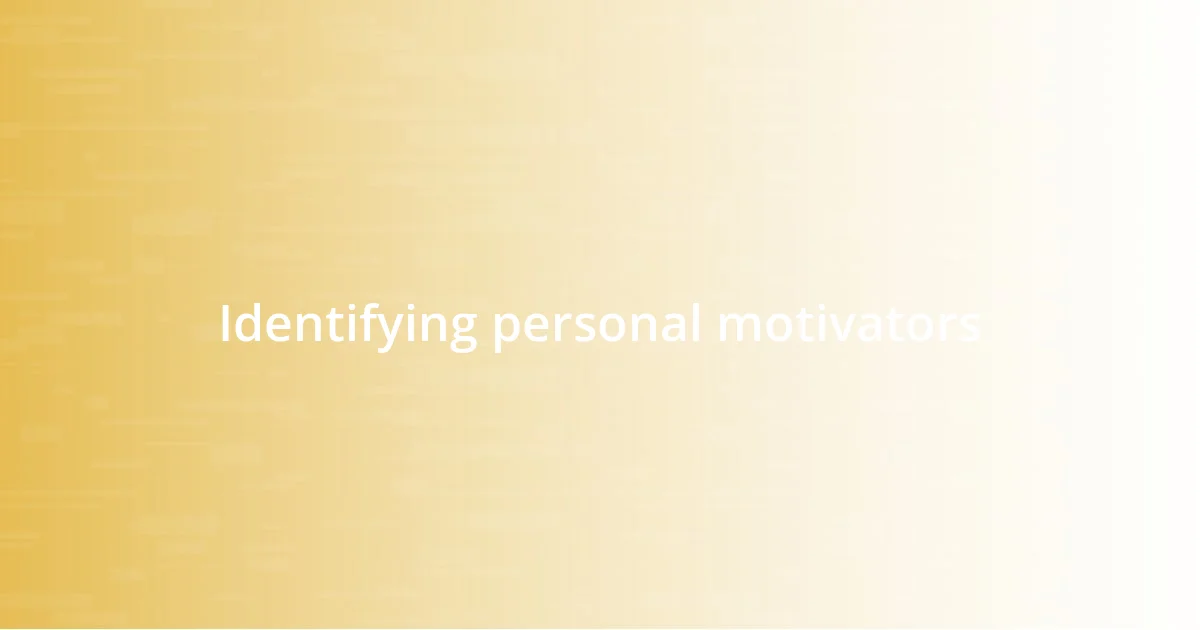
Identifying personal motivators
Identifying what drives us to co-create can be a profound journey. Personally, I often find that my motivations are rooted in a deep desire for connection and shared purpose. For example, when I worked alongside a group of social entrepreneurs to tackle local challenges, I was fueled by the feeling of belonging and the shared mission that united us. It became clear to me that when people gather around a common goal, the energy is infectious, and I wanted to be a part of that dynamic.
To uncover your personal motivators, you might consider the following:
- Reflect on past collaborative experiences and what excited or inspired you.
- Identify the values that resonate with you, such as innovation, community, or artistry.
- Think about what kind of impact you want to make—be it social, environmental, or personal.
- Explore how different collaborators make you feel during the process; who energizes you?
- Consider what skills or talents you enjoy sharing with others.
Each of these points could reveal something unique about what drives you to co-create.
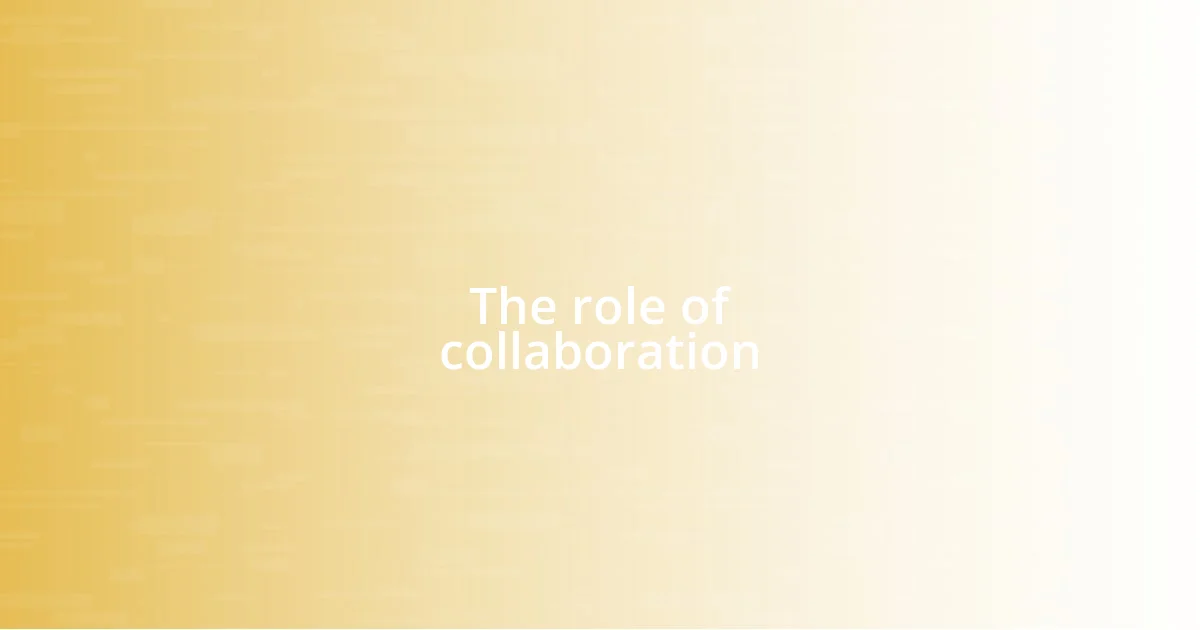
The role of collaboration
The essence of collaboration in co-creation is undeniable. I recall a mentorship program I participated in where we paired seasoned professionals with aspiring creatives. The results were magical; ideas that emerged from these collaborations felt invigorating and informative. Watching seasoned experts learn from the fresh perspectives of newbies really cemented my belief that collaboration can lead to profound growth for everyone involved. Have you ever experienced a moment where a collaboration sparked an idea you couldn’t have thought of alone?
Moreover, collaboration serves as a catalyst for accountability. Working alongside others naturally encourages a sense of responsibility—not just for your own contributions but for the collective goal. I once joined a community garden project where each member was tasked with specific roles. Knowing that my efforts directly impacted the success of the garden urged me to put forth my best work. The journey felt more engaging when I shared it with others, enhancing both my commitment and joy.
The diversity of ideas and approaches that collaboration brings to the table often leads to creative breakthroughs. I once helped plan a charity event where volunteers with various backgrounds contributed unique insights. From marketing strategies to artistic direction, the resulting event not only exceeded our fundraising goals but also created a vibrant sense of community. Have you considered how your own experiences could change when multiple minds come together toward a shared vision? The outcome can be remarkably transformative.
| Key Aspect | Impact |
|---|---|
| Shared Ideas | Leads to innovative solutions |
| Accountability | Encourages commitment and joy in the process |
| Diversity | Fosters creative breakthroughs |
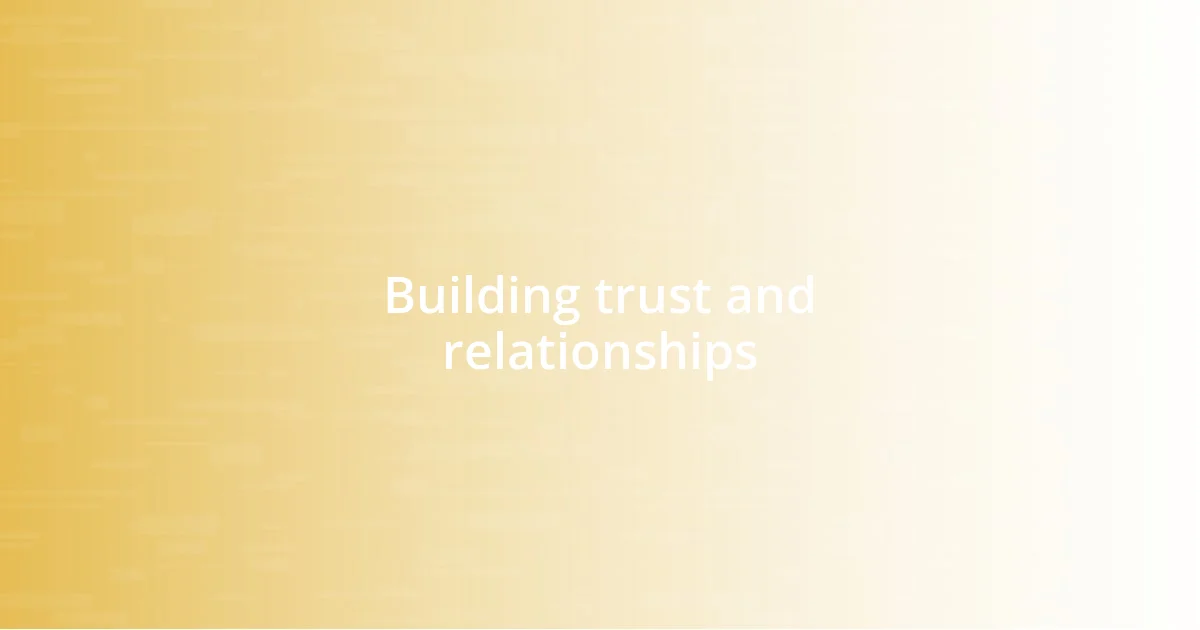
Building trust and relationships
Building trust is essential in any collaborative effort. In my experience, it often starts with open communication. I remember a project where my team and I had regular check-ins, creating a safe space to share ideas and concerns. This openness fostered a supportive environment where everyone felt valued. Have you ever noticed how trust develops when people are genuinely heard?
Relationships in co-creation also thrive on mutual respect. I once teamed up with a group of artists, each with distinct styles and visions. Rather than imposing our perspectives, we embraced each other’s creativity, which elevated the entire project. This respect for one another’s work built a solid foundation that allowed us to take risks together. Don’t you think that respecting diverse talents can unlock potential you never knew existed?
Additionally, I’ve found that building trust takes time and consistency. During a community service initiative, I volunteered alongside the same team for several months. As we faced challenges together, we naturally bonded over shared struggles and victories. Those experiences deepened our relationships, reminding me that trust is not just a quick handshake; it’s a commitment to the journey together. How do you nurture trust in your collaborative efforts? For me, it’s all about showing up and being present.
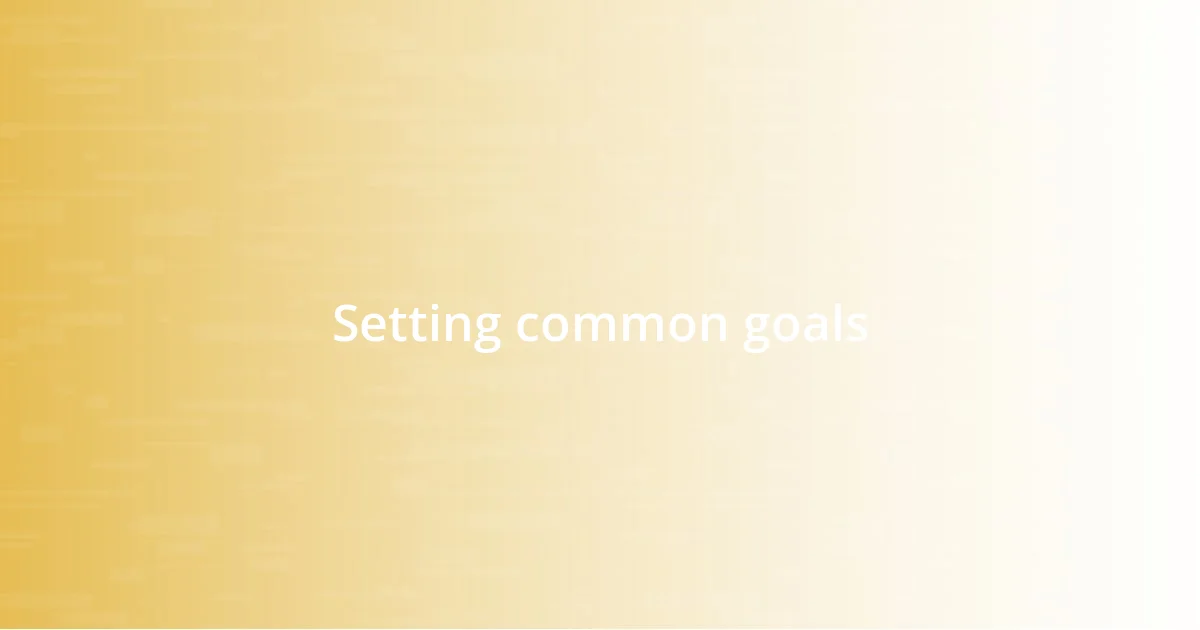
Setting common goals
Setting common goals is a fundamental step in co-creation that helps align everyone’s efforts toward a shared vision. I remember a time when my team gathered for a brainstorming session to outline our objectives for a local festival. We each brought our individual experiences and ideas, but it was through that initial discussion that we honed in on exciting and attainable goals. It felt incredibly satisfying to see everyone on the same page, unified by a common purpose.
In my experience, clearly defined goals not only clarify what we’re striving for but also instill motivation across the group. I participated in a tech startup project where we collectively set specific milestones, from product launches to user engagement targets. Those metrics transformed abstract ambitions into tangible driving forces. Have you noticed how much easier it is to stay motivated when you can see your progress? It becomes a shared journey, not just a personal endeavor.
Additionally, revisiting our goals periodically allows for reflection and adjustment, fostering a sense of ownership and engagement. During a community outreach program I joined, we met regularly to evaluate our goals based on the feedback we received. This adaptability kept everyone involved and invested. Have you ever felt that shift in momentum when a team collectively celebrates achieving a goal together? It reinforces the bond we share, making the entire process feel more collaborative and fulfilling.
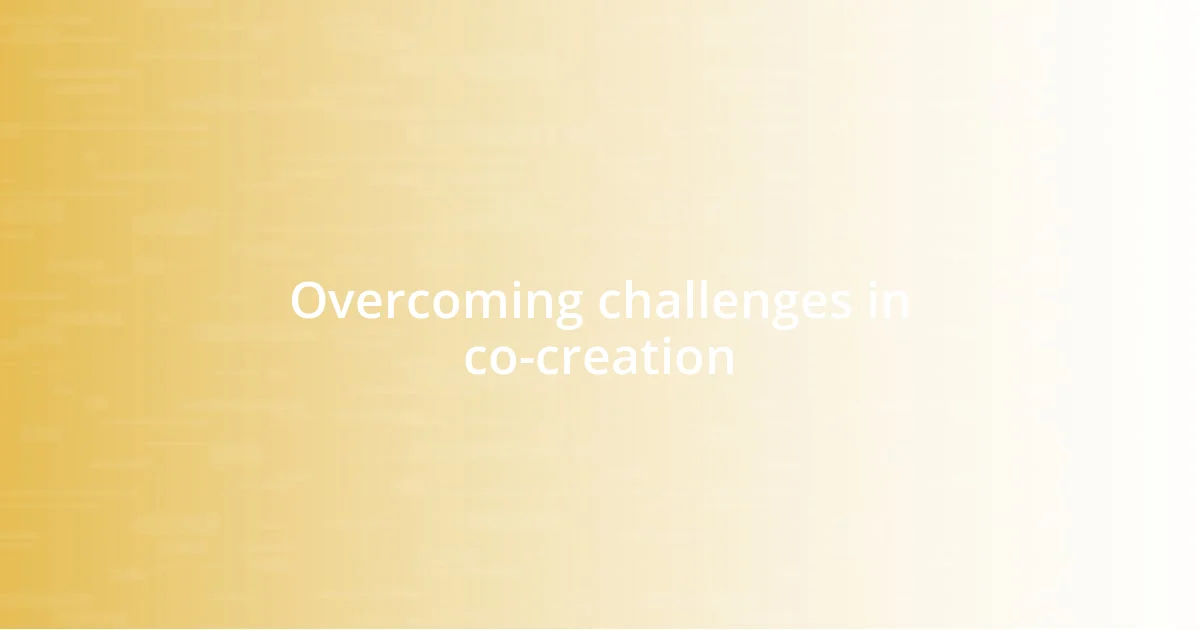
Overcoming challenges in co-creation
Co-creation often comes with its fair share of challenges, but I’ve discovered that embracing them can lead to growth. For instance, I remember a time when a tight deadline created a lot of tension within my team. Instead of letting frustration take over, we decided to sit down and openly discuss our individual stressors and limitations. This candid conversation not only lightened the atmosphere but also resulted in a revised plan that leveraged each person’s strengths. Have you ever faced a similar situation where open dialogue turned a challenge into an opportunity?
Navigating differing opinions can be tricky in collaborative efforts. Once, during a design project, our team struggled to agree on a visual direction. Instead of pushing our agendas, we organized a workshop that allowed each member to showcase their concepts. I was amazed by how this approach not only highlighted the unique perspectives each person brought but ultimately guided us to a hybrid design that everyone felt proud of. Isn’t it fascinating how disagreements can lead to innovative solutions when handled thoughtfully?
Lastly, I believe that proactively addressing potential challenges can create a stronger foundation for co-creation. Early in my career, I was involved in a community project where we anticipated hurdles like resource constraints and time limitations. By brainstorming solutions together beforehand, we not only empowered one another but also built a sense of confidence as we faced obstacles. Have you noticed how preparing for challenges can transform anxiety into reassurance? It made me realize how essential it is to approach collaboration with foresight and teamwork.
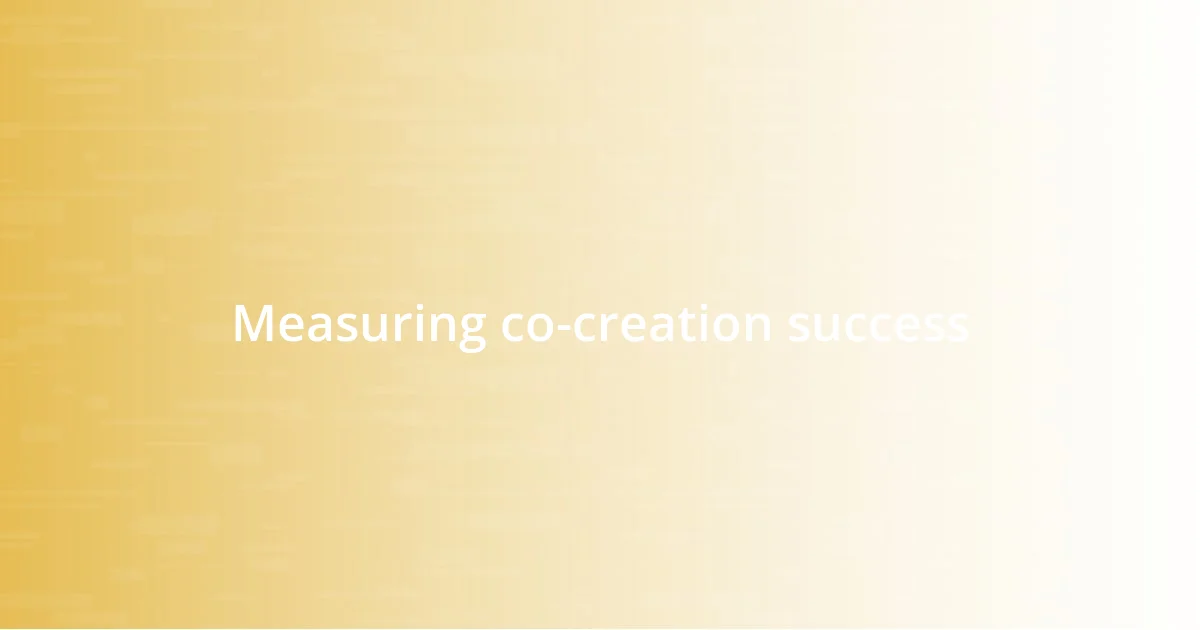
Measuring co-creation success
Measuring the success of co-creation is an enlightening journey that requires reflection on both quantitative and qualitative metrics. In one of my collaborative projects, we used surveys to gather feedback after each phase. An unexpected outcome was discovering how often participants felt their voices were heard, which directly correlated with their ongoing motivation. Have you ever considered how the sense of value in contributions can shift the energy of a project?
Another powerful way to gauge success is through shared experiences that foster connection. I recall a community art project where we held a showcase to celebrate our collective efforts. The joy on everyone’s faces as they shared their inspirations and outcomes was an organic indicator of our success. It was not just about the final product but seeing each individual thrive in a supportive environment. What emotions do you think emerge when people realize they’ve accomplished something meaningful together?
Lastly, tracking progress toward our common goals reveals the tangible impact of collaboration. During a tech innovation initiative I participated in, we created a visual timeline of our milestones. With every check-in, I felt a growing sense of accomplishment not only for myself but for my teammates as well. Isn’t it fascinating how visualizing our achievements can reignite passion and spark new ideas? By measuring success both emotionally and structurally, we can better appreciate the entire co-creation process.










